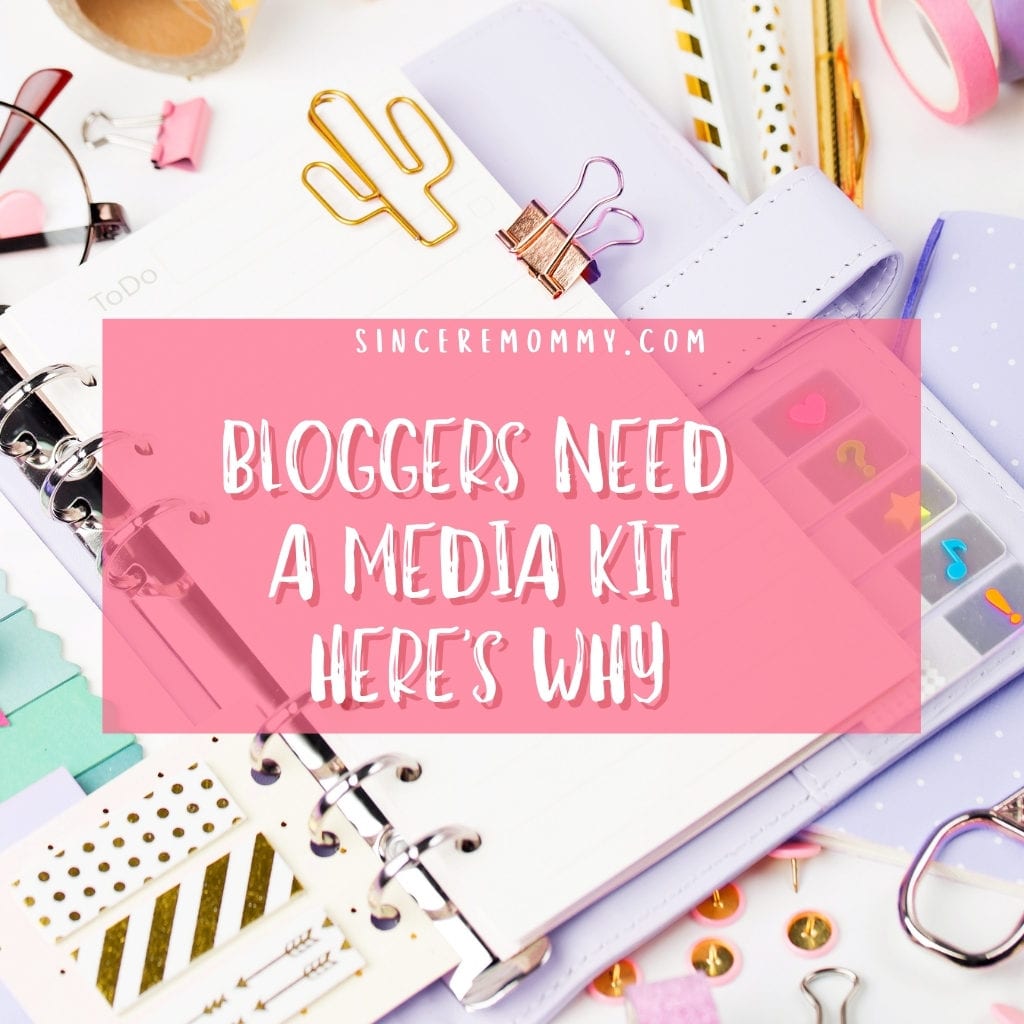Every blogger needs to invest some time in creating a media kit. Why is that? A media kit may be exactly what you and your blog need to reach the next level of success. This document encompasses all of the valuable information about your blog.
Your media kit is something you can create to show brands and potential advertisers why they should work with you. To do this, your media kit needs to be clean and professional-looking. How exactly do I create my own media kit? Let me show you the steps and why bloggers need a media kit.
*This post contains affiliate links for which I may receive a small commission if you click and purchase something at no extra cost to you).*
Table of Contents
Things You Need To Include In Your Media Kit
A brief bio about your blog and yourself
Advertisers and brands will want to know who you are and what your blog is about. Be sure to include information such as how long your blog has been around, what topics you enjoy writing about the most, and anything else that you think the potential advertiser might enjoy knowing about you.
Try to be as personable as possible. You do not want to appear too self-promoting, but you do want to appeal to your potential advertiser.
Pictures and graphics
In your personal media kit, there will be some text writing, but because a media kit is meant to grab the attention of potential brands to work with, you will need to include some pictures and graphics to break up the text. Be sure to incorporate the font style of your blog and the colors you use in your logo and theme so that it best represents you.
You can include your best photography from posts or photos you’ve taken from your previous collaborations. Include a great, professional-looking headshot photo of yourself as well. Do not use a grainy photo from five years ago if you can avoid it. You are representing yourself and your blog, so make it pretty. Canva is a great free website to design with.
Blog stats
You will want to let your advertisers know how your blog stacks up. Include your number of subscribers and social media followers. Also, include your statistics for the month: How many monthly page views and visitors do you get?
It is also a great idea to include demographics. Don’t include that information if you don’t have many followers on a particular social media account. If you are a brand new blogger and don’t have many followers to boast about, then include your growth rate instead.
Previous Work +Include Testimonials
Testimonials are a compelling way to convince advertisers that you are exactly what they seek. If you have had many great previous experiences that you can share on your media kit, that will definitely be a plus. They will want to see who you have worked with previously and how well it went. You can show off your best work! Include brand logos or whatever you’d like to showcase your experiences. How you display your previous work is up to you. Just give your potential advertiser or brand an idea of what they should expect when they work with you.
Options and Pricing
Have some fun with this step. Include all the ways you’d be willing to work with a potential advertiser. List your prices for sponsored posts, sidebar ads, social media promotion, giveaways, ect. If you come up with a new and creative way to advertise, you may also include this.
Brands are always interested in finding new ways to market themselves. Be sure to include your prices so that a brand can decide what type of advertising will be in their budget.
Where do I begin?
Make sure that the brand has good contact information for you. You will want brands to be able to reach you easily. Think of your media kit as your virtual business card, but much better.
Showcase Your Work
Showcase your work and expertise in your media kit by including examples of your best content, collaborations, and projects. Highlight any notable achievements, awards, or recognition you’ve received and any media coverage or features you’ve been included in. Use visuals such as screenshots, images, and videos to bring your work to life and demonstrate the quality and creativity of your content.
Keep It Updated
Regularly update your media kit to reflect your brand and latest achievements accurately. Update your audience demographics and statistics, refresh your portfolio with new examples of your work, and add any new collaborations or partnerships you’ve secured. Keeping your media kit updated shows potential partners that you’re proactive and engaged, and increases your chances of securing lucrative opportunities.
Distribute Your Media Kit
Once your media kit is complete, it’s time to start sharing it with potential collaborators and partners. Include a link to your media kit on your website or blog, and mention it in your email signature and social media profiles. Reach out to brands, agencies, and other potential partners directly and share your media kit with them to introduce yourself and express your interest in collaborating.
I hope that this post is helpful to new and seasoned bloggers alike. These virtual business cards are amazing! Undoubtedly, all bloggers need a media kit. Go out there and create a beautiful media kit and start collaborating!
If you are interested in even more blogging tips you can check out this link >>> How To Make A Successful Money Making Blog In 6 Simple Steps

